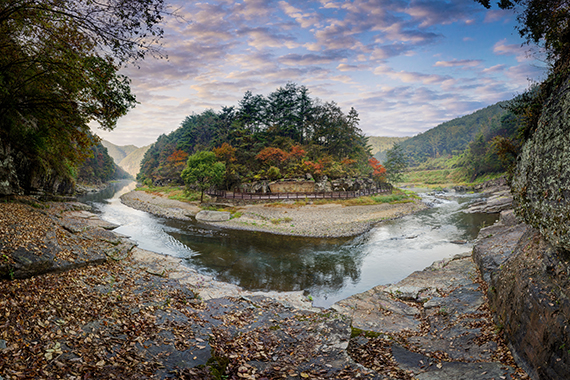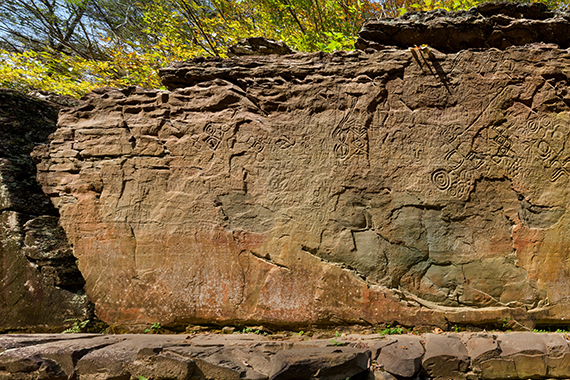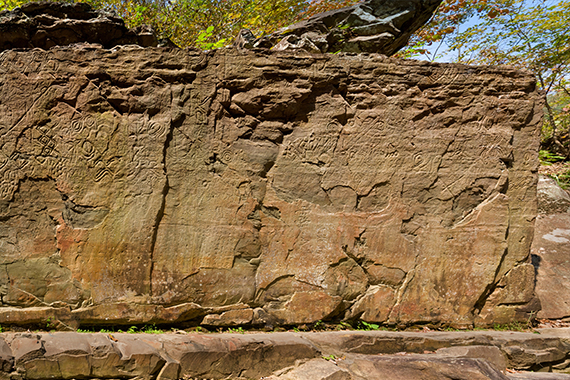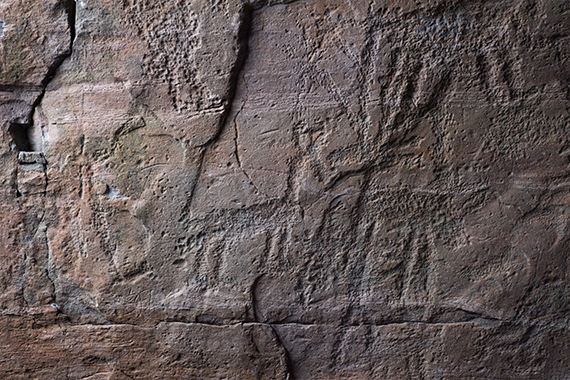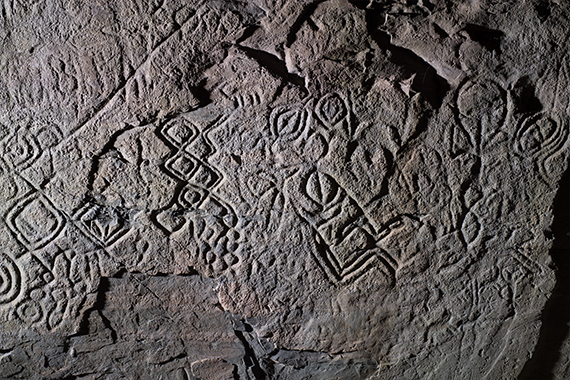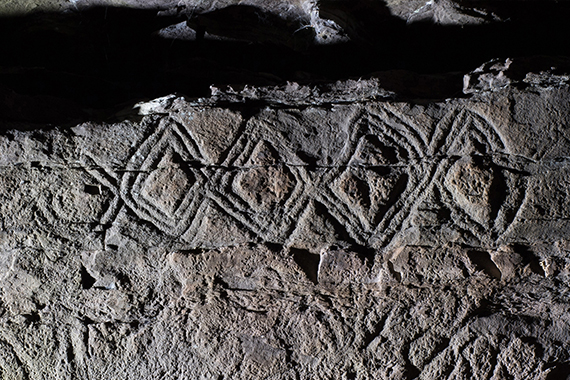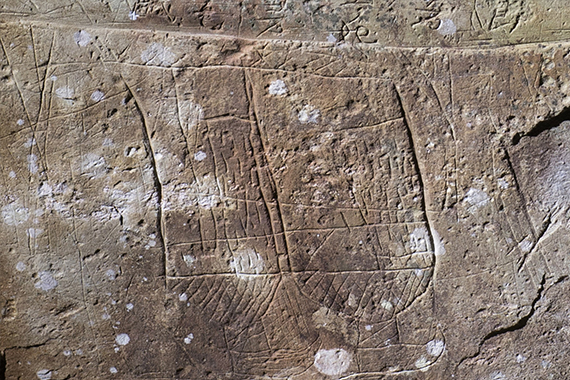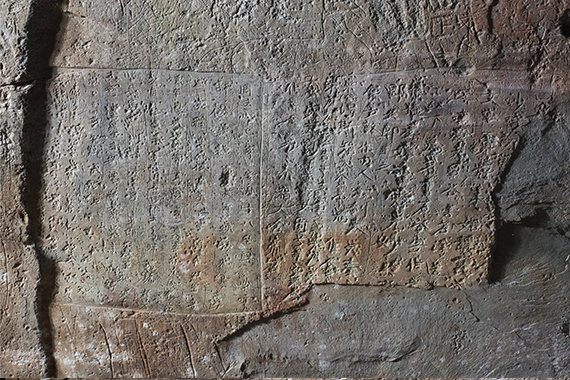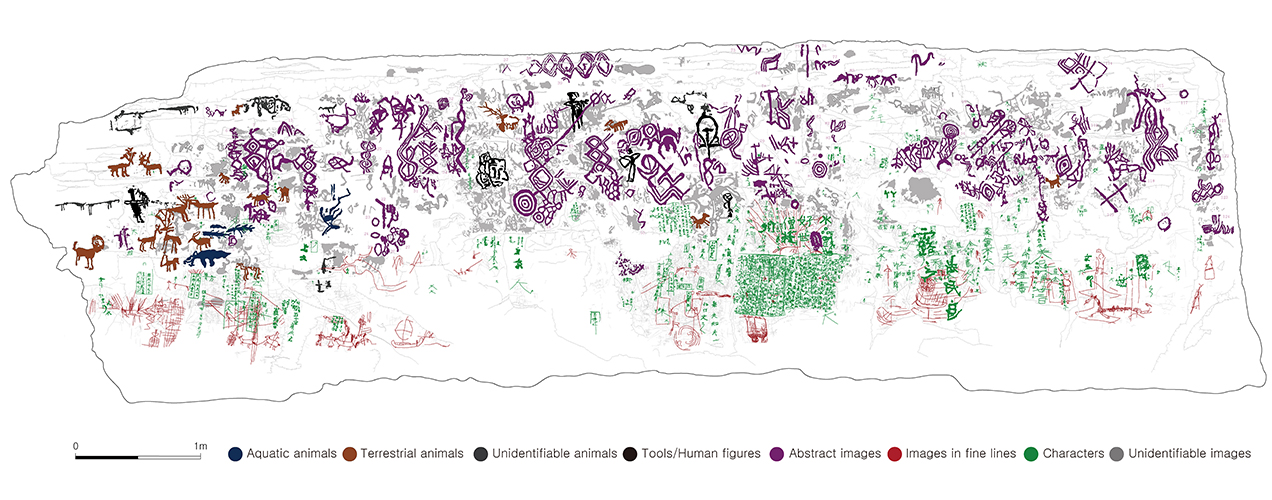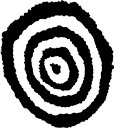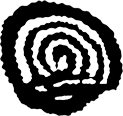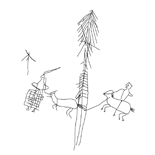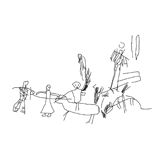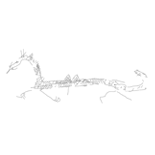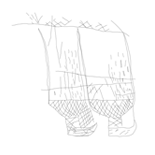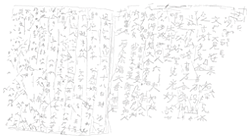Petroglyphs of Cheonjeon-ri
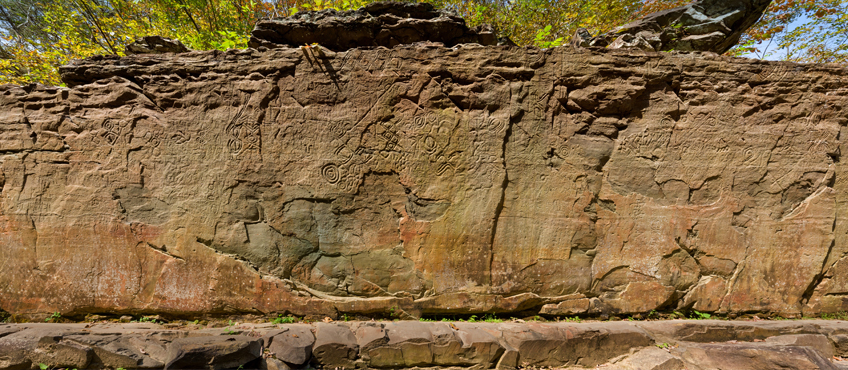
Petroglyphs of Cheonjeon-ri
National Treasure (Designated May 4, 1973)- Name : Petroglyphs of Cheonjeon-ri, Ulju
 San 210-2, Cheonjeon-ri, Dudong-myeon, Ulju-gun, Ulsan
San 210-2, Cheonjeon-ri, Dudong-myeon, Ulju-gun, Ulsan
Description
The Petroglyphs of Cheonjeon-ri are situated along Bangucheon Stream, an upper tributary of the Taehwagang River, approximately 0.7 kilometers upstream from Bangudae Terrace. They are carved onto a central rock surface measuring about 9.8 meters in width and 2.7 meters in height, as well as on four surrounding rock surfaces. The upper part of the central rock surface is inclined forward at an angle of about 25 degrees, which serves to protect the petroglyphs from wind and rain.
This site features a total of 625 etchings, organized into sections based on the era they represent. The upper left section of the rock surface displays drawings from the Neolithic period, including images of deer and fish. In the central upper part of the rock surface, abstract drawings from the Bronze age, such as concentric circles, diamonds, and wave patterns, are depicted.
The lower part of the rock surface includes incised images and characters from the Silla Dynasty. These include depictions of a royal parade, sailing ships, horses, dragons, and, notably, the inscription of the historical record of King Beopheung of the Silla Dynasty. This inscription is considered a valuable resource for ancient historical research.
Along with the Petroglyphs of Daegok-ri petroglyphs, Petroglyphs of Cheonjeon-ri are registered as a UNESCO World Heritage Site Tentative Lists.
This site features a total of 625 etchings, organized into sections based on the era they represent. The upper left section of the rock surface displays drawings from the Neolithic period, including images of deer and fish. In the central upper part of the rock surface, abstract drawings from the Bronze age, such as concentric circles, diamonds, and wave patterns, are depicted.
The lower part of the rock surface includes incised images and characters from the Silla Dynasty. These include depictions of a royal parade, sailing ships, horses, dragons, and, notably, the inscription of the historical record of King Beopheung of the Silla Dynasty. This inscription is considered a valuable resource for ancient historical research.
Along with the Petroglyphs of Daegok-ri petroglyphs, Petroglyphs of Cheonjeon-ri are registered as a UNESCO World Heritage Site Tentative Lists.
Discovery
The petroglyphs of Cheonjeon-ri, discovered in 1970, are the first collection of prehistoric petroglyphs reported in Korea. A team from the Dongguk University Museum had been surveying the area for Buddhist sites over three years (1968 to 1970), and the petroglyphs were reported to them on December 24, 1970. The nearby Bangudae Petroglyphs were discovered on December 25, 1971, a year later.









